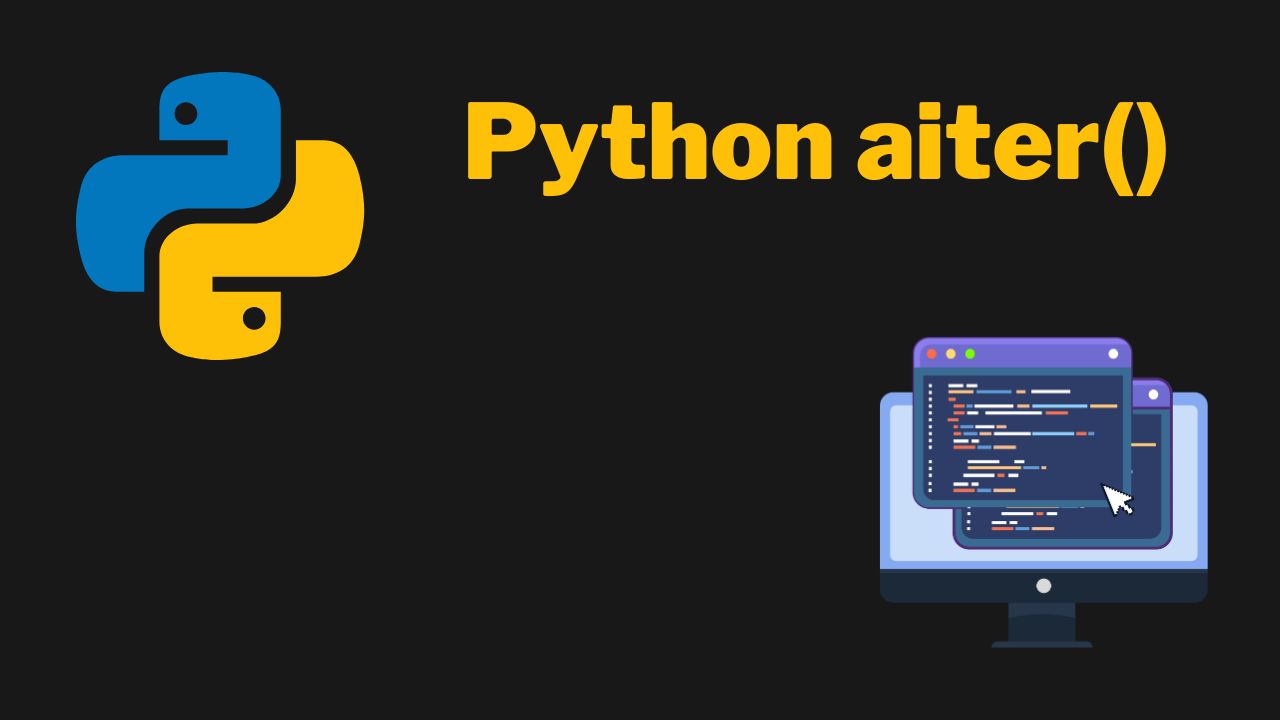Python aiter() is a built-in asynchronous function that returns an asynchronous iterator object. In simple terms, this allows a developer to loop over large amounts of data without blocking their application’s execution. This can be particularly useful in applications that require heavy computation or networking where delay is expected.
Understanding how to work with Python aiter is critical for anyone working with asynchronous programming in Python, especially with the continued rise of asynchronous frameworks and libraries.
aiter() Syntax
The syntax for the Python aiter function is quite simple:
aiter(obj)
Code language: Python (python)In this syntax, “obj” represents the object you want to create an asynchronous iterator for.
Here’s a basic example of aiter Python in action:
async def my_async_sum(iterable):
_aiter = aiter(iterable)
_sum = 0
while True:
try:
num = await anext(_aiter)
_sum += num
except StopAsyncIteration:
break
return _sum
Code language: Python (python)In this case, an asynchronous iterable object is passed to the function my_async_sum(). Then, Python’s aiter is used to create an asynchronous iterator for it.
aiter() Parameters
The Python aiter function only takes a single parameter.
- obj: This object must be an object that defines the aiter or anext method, or both.
aiter() Return Values
The Python aiter function returns an asynchronous iterator object.
An asynchronous iterator is an object that defines a method named anext, which returns an awaitable object.
Here’s another example related to how Python aiter() works:
class AsyncIter:
def __init__(self, stop):
self.current = 0
self.stop = stop
def __aiter__(self):
return self
async def __anext__(self):
if self.current == self.stop:
raise StopAsyncIteration
else:
result = self.current
self.current += 1
return result
async def main():
async for number in AsyncIter(10):
print(number)
await main()
Code language: Python (python)In the code above, the AsyncIter class defines both an aiter and an anext method, providing a full asynchronous iteration protocol.
Conclusion
Understanding Python aiter is a fundamental part of mastering asynchronous programming in Python. For hands-on learning Python, consider checking out these Python exercises.
If you’re interested in exploring other built-in Python functions, you might also find this guide to the Python abs() function useful.
To deepen your knowledge, always seek to understand the logic behind the functions and try out different examples using different data types and iterable objects. Happy coding!
Here’s a useful link for additional reading: Python Asynchronous Iterators and Generators.

